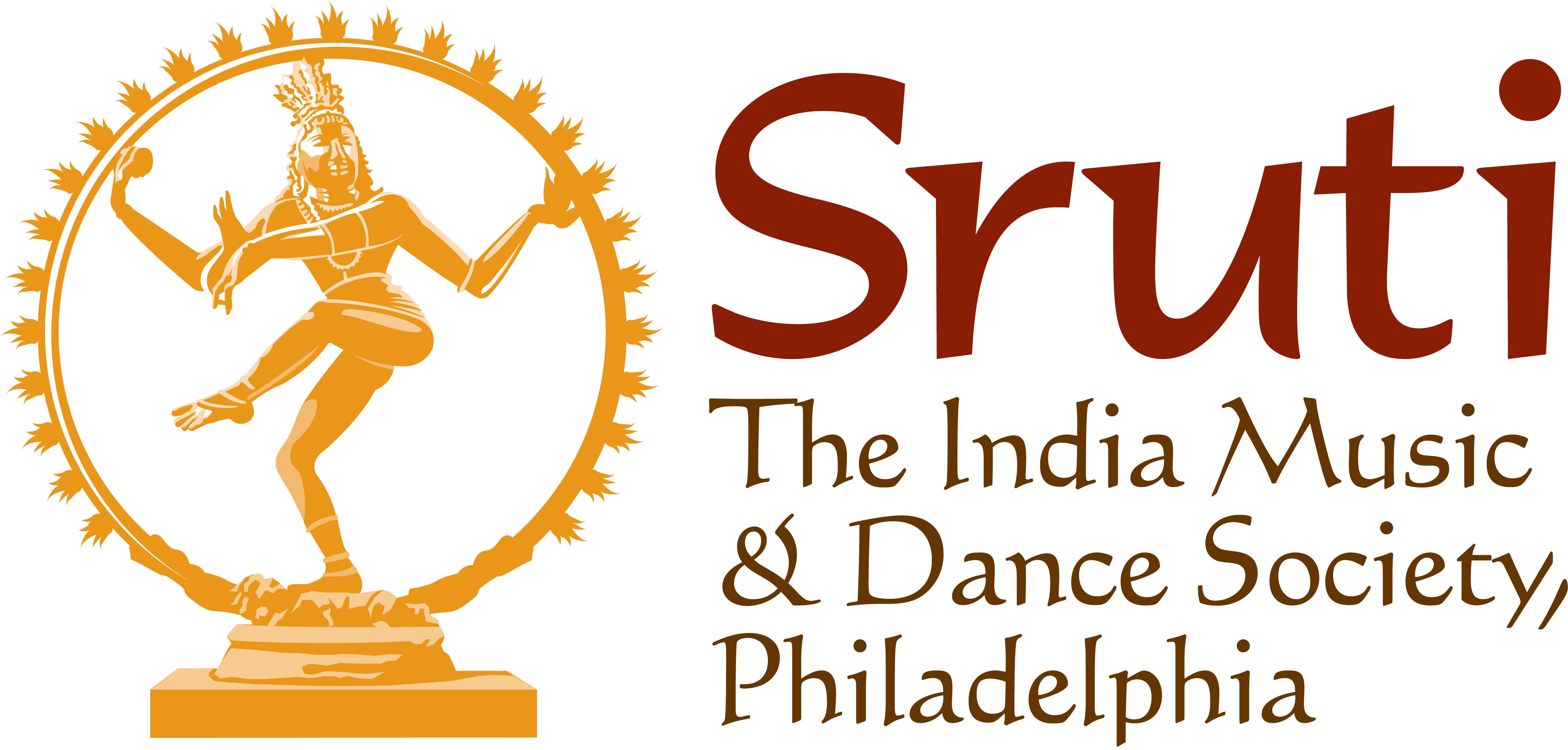Your cart is currently empty!
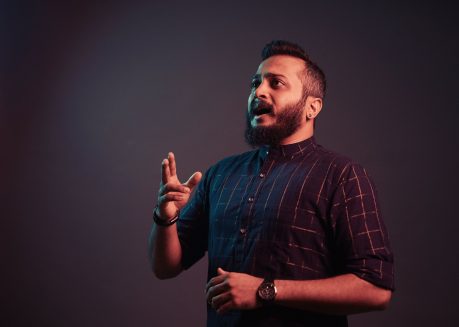
Carnatic Vocal Concert (In-person event; no video recording / streaming available)
By Sandeep Narayan
Saturday, October 15, 2022 | 4:30 PM
Community Music School
775 W Main St
Trappe, PA 19426
United States
About This Event
Carnatic Vocal Concert by Sandeep Narayan accompanied by VVS Murari on the violin, Sangita Kalanidhi Trichy Sankaran on the Mridangam and KV Gopalakrishnan on the Kanjira.
This concert will feature a special meet and greet session with the legendary mridangist Sangita Kalanidhi Sri. Trichy Sankaran to commemorate his 80th birthday.
Please note: No video recording / streaming is available for this in-person concert.
Sandeep Narayan (Vocal) Website
Sandeep Narayan is regarded as one of the leading artists in Carnatic music today. By breaking boundaries as the first American born musician to move to India & make Carnatic music a full-time career, Sandeep is proud to be a role model for many aspiring musicians around the world today.
Sandeep had his initial training in the United States from his mother, Shubha Narayan. In 1996, Sandeep relocated to Chennai and begin learning from Calcutta K.S. Krishnamurthy. He is now a senior disciple of Sanjay Subrahmanyan. Sandeep has performed extensively in India and around the world.
Sandeep is a recipient of several prestigious awards including ‘Isai Peroli’ from Kartik Fine Arts, ‘Ustad Bismillah Khan Yuva Puraskar’ from Sangeet Natak Academy, ‘Kala Ratna’ from Cleveland Thyagaraja Aradhana, ‘Best Ragam-Tanam-Pallavi’ award from Music Academy Madras, and ‘Shanmukha Sangeetha Shiromani’ from Shanmukhananda Sangeetha Sabha. Sandeep is also an “A” grade artist on the All India Radio, Chennai
Sandeep has given lecture-demonstrations at venues including Carnegie Mellon University, UC Santa Barbara, and conducts workshops around the world. Sandeep aspires to continue serving as a cultural ambassador between Carnatic music and audiences worldwide.
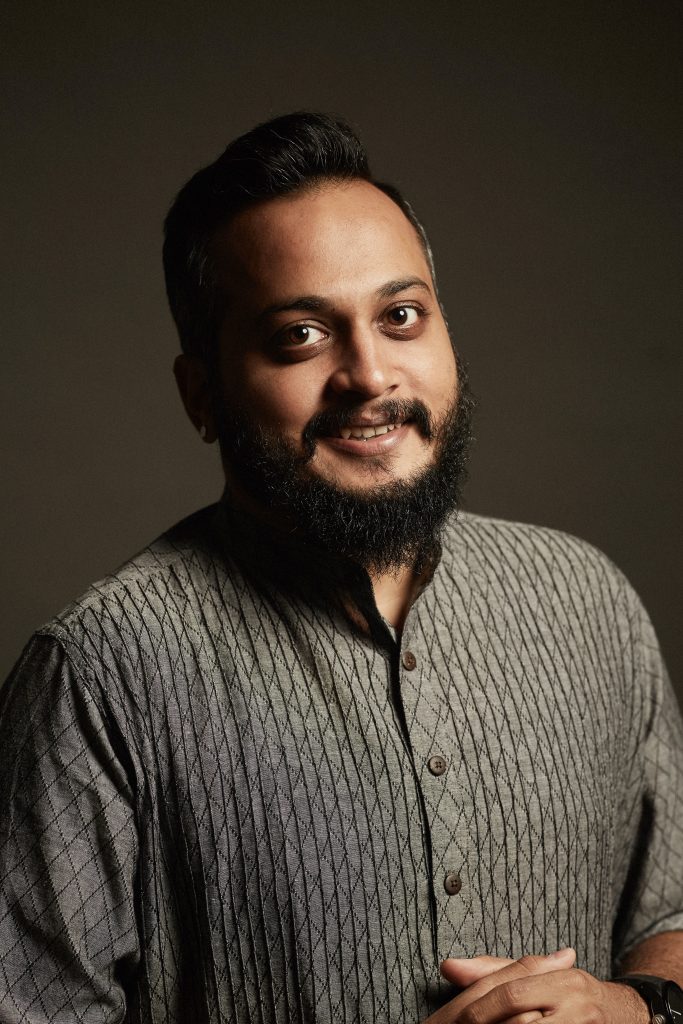
VVS Murari (Violin) Website
VVS Murari represents the fourth generation of music practitioners in his family. Murari has been groomed under the guidance of his father VV Subrahmanyam and later from the Padma Vibhushan Semmangudi Srinivasa Iyer. Murari has performed extensively in India and abroad at several prestigious venues. Additionally, Murari has been a catalyst in grooming talented young musicians. He has also been involved in several unique projects combining classical Indian music and western classical to jazz music thus bringing the world together.
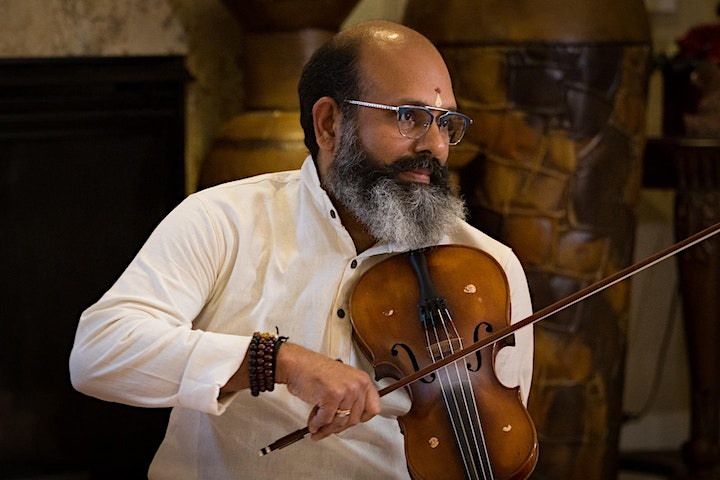
Trichy Sankaran (Mridangam) Website
Professor Trichy Sankaran is a world-renowned percussion virtuoso, Indian music scholar, composer, and the founding director of Indian music studies at the York University. Over the years, Prof. Sankaran has bridged eastern and western pedagogical styles and has influenced generations of students who have become noted performers, composers, and music educators themselves. He has made valuable contributions to many scholarly conferences across North America and has published two major books: one on the theory and techniques of South Indian classical drumming, and the other on the Art of Konnakkol (Solkattu).
Trichy Sankaran has performed at major festivals in India and abroad. In his six decades of concert experience in Carnatic music, he has accompanied leading artists of India. He has performed in jugalbandhis (North-South combo) with leading Hindustani musicians. In addition to his usual traditional settings and numerous solo recitals, he has performed with Nexus, gamelan, jazz, electronic, African music ensembles, and world drums, as well as his own group, Trichy’s Trio.
He continues to perform and write compositions for contemporary and world music ensembles. He has received numerous honors and awards for his contributions to university teaching and artistic excellence. In January 2012, Dr. Sankaran received the most coveted honor of ‘Sangita Kalanidhi’ from the prestigious Music Academy of Madras. He is the first recipient of this award in the Pudhukkottai tradition of mrdangam playing. Dr. Sankaran pioneered the Thyagaraja Festival in Toronto, Canada in 1972.
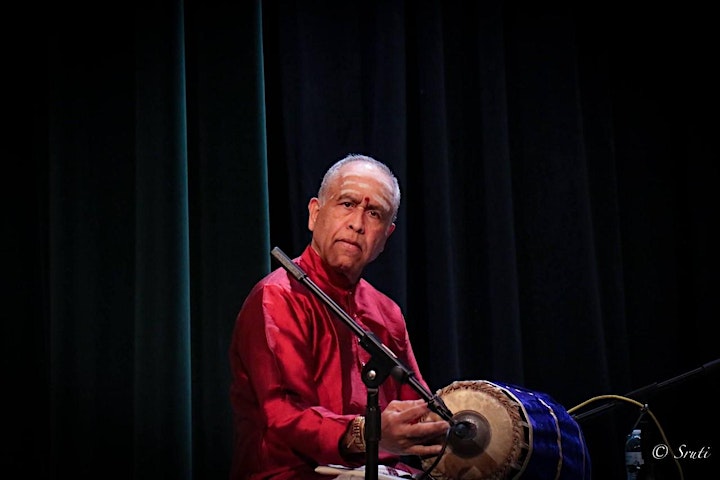
K V Gopalakrishnan (Kanjira) Website
Gopalakrishnan was initially trained by his father KVRS Mani and is now under the guidance of Dr. T K Murthy. Honored by the Kanchi Kamakoti Mutt as their ‘Asthana Vidwan’, Gopalakrishnan has received several prestigious awards including ‘Yuva Kala Bharathi’ from Bharat Kalachar, ‘Obul Reddy endowment’ award from Narada Gana Sabha, and ‘Bismillah Khan – Yuva Puraskar’ award from Sangeet Natak Academy. He is also an accomplished Mridangam player and has won the ‘Best Mridangist’ award from The Music Academy, Madras
Gopalakrishnan has shared the stage with several senior and contemporary artists. He has also worked with movie music directors including Ilayaraja & Vidyasagar. He is an “A” grade artist on the All India Radio, Chennai. He has travelled extensively around the world on concert tours & music festivals.
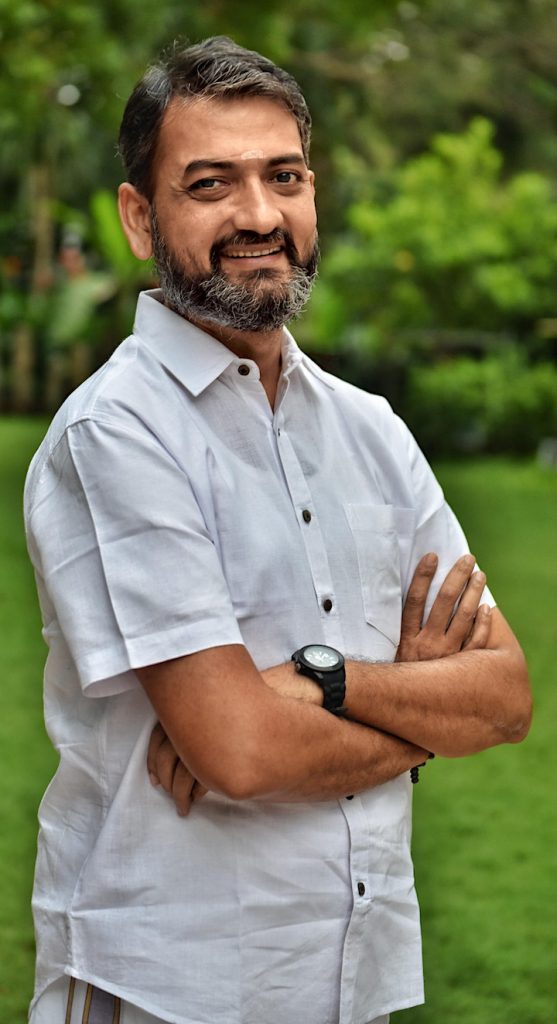
Concert Review 1
A melodious evening with Sandeep Narayan
By Dinakar Subramanian
There is a special joy in enjoying a live Carnatic music concert with brilliant musicians. That joy was compounded on October 15, 2022 in the cozy atmosphere of the Community Music School auditorium in Trappe, Pa. Performing for Sruti were Sandeep Narayan, VVS Murari, Sangita Kalanidhi Trichy Sankaran and KV Gopalakrishnan. All have performed for Sruti earlier.
There was excitement in the air right from the snippet of srI ragam that Sandeep sang. Rasikas who listened to him at the same venue almost exactly 5 years ago were eager to see what would unfold. The eternal Karur Devudu Iyer’s varnam pretty much glued the audience to their seats.
Declaring that the next rAgam was riSabriyA, Sandeep sang a BMK (M. Balamurali krishna) composition titled – nandISam vandE sadA – a reference to Nandi – the mridangam playing vahana of Lord Siva. The haunting kriti also had the anupallavi line – sAmagAna kaLAnidhim shabhda shAstra pravINam, undoubtedly referring to maestro Sangita Kalanidhi Sankaran’s presence on stage. The phrase roughly translates ‘a treasure of art in sAmagAna (the precursor of Carnatic music) and an expert in the field of sound’. Very fitting indeed.
The kalpanaswarams were craftily designed and Sandeep made the audience vicariously participate in them with great flair. Violinist Murari came into his own matching the vigorous improvisations that redoubled my enjoyment. On a side note, this kriti, due to its structure, also reminded me of BMK’s other Sanskrit composition cintayAmi santatam in sucaritrA that he composed on Muthuswami Dikshitar’s bicentenary celebration at the Music Academy in 1975. One of my favorite activities when presented with a rAga Alapana is to guess what kriti will be rendered. A relatively short exposition of kAmbOji suggested it would not be shrI subrahmaNyAya namastE. Sandeep sang EmayyA rAmA – a lovely kriti of Bhadrachala Ramadasu that we have not heard in Sruti perhaps ever. Memories of listening to this kriti sung by the great Neduneri on All India Radio in my younger years came to mind.
An elaborate sAramati followed with Sandeep going into a zone of showering us with sancharas. Guessing that the kriti was Thyagaraja’s mOkshamu galadA, I thought to myself that the pace of the alapana did not match the sedateness of the composition. Enjoy each piece as its whole, I told myself.
Sangita Kalanidhi Sankaran then took center stage in an elaborate tani where he showed his mastery and defied his age. The denouement brought everyone to their feet with pure joy and prompted Sandeep to say what everyone was thinking – “Cannot believe he is 80’. What a moment to savor for everyone in the audience – having witnessed a stellar tani avartanam by such a great artist on our Sruti stage.
KV Gopalakrishnan showed his mettle by going in lock-step with Shri Sankaran giving the appropriate edification and playing his part for the crescendo. Murari played a beautiful anchor role with his mellifluous bowing and his alapana for kAmboji was especially superb that it took me to a different place.
Sandeep then concluded with a few other pieces including a short RTP in sAmA. As I compiled my thoughts at the end of the day, here were some observations: The artists had fun on stage and the camaraderie on stage was contagious. This resulted in a synergy whose ultimate benefactor was the audience. Sandeep has such a captivating disposition both as a person and a performer that you cannot but go into his world and enjoy the music. He makes you participate and that is a great credit to his personality and stage presence.
The artists also gave the requisite respect to seniority, experience and just pure class by acknowledging Sri Sankaran’s vidwat by unreservedly applauding at the right moments. Truly an experience to behold for everyone. The cozy atmosphere at the CMS auditorium where the artists could see everyone in the audience fed on each other that the artist gave their best and the audience did their part to wholeheartedly appreciate the concert.
Another repeated and pleasant observation is that the reach of artists is so powerful in that the concert itself draws their students and families from outside of the usual listening area. This really creates a good cross-pollination of ideas and creation of friendships. This could be a beneficial side-effect of people wanting to attend more concerts after the lock-down we have experienced in the past two years.
All of us left with a big smile on our faces and reverberations of some lovely music.
Dinakar Subramanian is a long time resident of the Philadelphia area, an avid rasika and musician and has served in various capacities on the Sruti Board.
Concert Review 2
An Enchanting Evening of Music by Sandeep Narayan
By Ravi Iyer
At the outset, it should be stated that reviewing a kutcheri featuring the legendary mridangist Sangita Kalanidhi Sri. Trichy Sankaran is superfluous. So what I note here is my observation of the concert as a listener, student & enthusiast of percussion and rhythm, and a connoisseur of Carnatic music. So in that sense, for the sake of records, it is my honor to write a review of a concert by Sri Sandeep Narayan accompanied by a stellar team of Sri VVS Murari, Sri Trichy S. Sankaran, and Sri K.V Gopalakrishnan (KVG) held on October 15th, 2022, at the community music school, Trappe PA. This concert was also a celebration of the 80th birthday of Mridangam virtuoso Shri Trichy Sankaran and what a privilege it has been for Philadelphians and Sruti members who were fortunate to attend the live concert featuring Professor Dr. Sri Trichy Sankaran, (Sankaran mAmA as we fondly call him), a torch bearer of the legendary Pazhani School (also known as the Pudukkottai bani). Those who could not make it to the concert really missed a memorable evening. While the review provides an overview of the concert, it will focus a little more than usual reviews, on the rhythmic and laya aspects given a) significance of the concert and b) being an mridangam and laya enthusiast myself.
Sandeep opened the concert with the varnam “Sami Ninne” in ragam “Sri” composed by Karūr Dēvuḍu Iyer rendered in two speeds. The tone for the reminder of the concert was set by this brisk pace and the camaraderie of the team. Off the bat, one could not miss the ringing and vibrant harmonics of the “chappu” and “meettu” that filled the hall throughout the concert. The weight and consistent resonance emanating from the playing of the Chappu and the “ara” Chappu (half or sliced chappu) is a learning for any student pursuing the art of mridangam. This was followed by a madhyama kala composition “Nandisham Vande sada” of Dr. Balamurali Krishna in ragam Rishabhapriya set to Rupaka thalam. Rishabhapriya is the 62nd melakatha raga (the prati madhyama counterpart of raga Charukesi.) which is not frequently heard, though not a rare raga. His effort in demonstrating Rishabhapriya ragam was applauded by the rasikas. The highlight of the rendition was the kalpana swaras with an Atheeta eduppu (½ before samam) at “Saptaswara Rishabhapriyam”. The teermanam or muktayi was played to reflect the structure of the lyrics Nandisham Vande Sada.
The most important composition that is a definitive authority on Saramati is ‘Mokshamu galada’ of Saint Thyagaraja. Sandeep picked this composition as the highlight or the main piece for the evening. The raaga per se was rendered well. Sandeep brought about the melting and meditative characteristics of this raga with the distinctive phrases SRGS/DNS, and PDMGS, that sums up its mood. Sandeep’s crystal clear voice trained to sing in an open throated style with a range touching the panchamam in lower register to the Dhaivata in upper register during raga alapana and kalpana swara is worth a separate mention. The song itself was rendered at a leisurely pace. Sandeep took off from the anupallavi, “sAkSAtkAra nI sadbhakti sangIta jnAna vihInulaku”, at a high pitch. This lent both passion and majesty to the song. Delineation of this raga, and this piece in particular, evoked karuna rasa and bhakti rasa.
The kalpana swaras were rendered for vINA vAdana lOluDau. String of phrases in vilamba kalam ending with Gandharam such as PDMG, NDMG, DMG, MPDMG, SPMG, was very lilting. Swara exchanges of fast phrases and kuraippu was followed by a crisp and short Thani Avarthanam.
As an mridangam enthusiast and an ever learning student of rhythm and percussion, I will be remiss if I don’t shed some light in the rhythmic aspects of the concert especially in the thaniavarthanam section which consisted of an introductory stage, middle stage that involved change of pace or gati bhedams, and the concluding stage. The focal point or the eduppu, in this case “One after” samam chosen and elaborated upon by Sandeep for niraval and kalpana swara became the targeted point of return for mAmA’s and KVGs rhythmic sequences. After a few avarthanas of phrases by mAmA, the korvai (which literally means strung together) played was a GoPucha Yati (which involves reduction or diminution like a structure of a cow’s tail) in the Poorvangam followed by a variety of kandam (5), Thisram (6), and Mishram (7) Srotavaha Yati, in the Uttarangam. The final structure looks like a “Damru” so can be classified under a Damru Yati
To illustrate:
Tha tham kita dhin Thom tha dhin
Kita dhin thom tha dhin,
dhin thom than dhin,
thom tha din
tha
tha dhi gi na thom
thaDi GiNaThom
tha di Gi Na thom Thangu
thadi GiNa thom thadi GiNathom Thangu
(thadiGiNathom thadiGiNathom thadiGiNathom)*
*played in Thisram
When planning the second and third time the Uttarangam part is substituted by Tha di, Gi Na thom (6) and Tha, Dhi, Gi Na thom (7) respectively.
KVG responded to the call and action by setting up the korvai in similar fashion, however varied the structure by playing the thisram variation (of 5,6,7) once in the middle giving a different aesthetic flavor to the Korvai.
Then came my favorite part when mAmA set up the gati bhedam to Thisra Nadai by introducing the phrase “Dhin Kita thaka dhin, dhin dhin Tham Kitathaka, Din Thaku Dhin Tha ku Dhin, Tha Tha dhin….”
After introducing this pattern few times with different end variations, he bagan improvising by playing the thisram phrases in different speeds to accommodate different numbers of (THa Di, GiNa Thom (6); Thaka Tha Di, Gina thom(8); Thaka Dhiku ThA Dhi, GiNA thom (10)). KVG responded ably by playing the thisram but ending with a misra nadai korvai that goes like this:
Tha Dhin Thadhin Tha ,,,
Thaka din thadin tha,,,
Kita dhin tha din tha,,,
(Tha dhin tha din_Thaka din tha din_Kita Din tha din) x 2
(Tha di, Gina Thom, Thaka Tha Di, GiNA thom, Thka Dhiku Tha Dhi, Gina thom) x3
mAmA then played the sarva Laghu patterns in madhyama kalam cresending into the fast tempo with fast tempo phrases. This segment featured podi sorkal “Micro or minute syllables” a specialty of Sankaran mAmA. He ended this round with another Korvai traversing chatusram and thiram. KVG responded with a well-played fast phrases and equally challenging Korvai.
The Avarthana Kuraippu (cyclic reduction) indicating impending finale of the Thani, was a Chatusra kuraippu with glimpses of Mishra, Thisra, Kanda nadais, short korvais culminating in fast phrases in ½ cycles. Both mAmA and KVG kept audience excited with electrifying flow patterns, a pharan (fast rhythmic pattern), improvising upon them and finally concluding with a Thisra Nadai mora and the final Korvai repeated three times. The final Korvai played was such that it would reach the ‘eduppu’ only on conclusion of the third round when Sandeep and VVS Murari joined by singing the phrase vINA vAdana lOluDau and thereby indicating the end of the solo.
Forget the math or calculations that can be easily memorized and reproduced by almost anyone, but the clarity of each and every syllable and the precision with which falls can only be attained by Sadhana and experience which mAmA has a galore of starting from age 4 and a debut with his guru Sri Palani Subramania Pillai the age of 11. His vivacity and clarity of playing defies his age, and as rightly commented by Sandeep after the thani, “Didn’t feel like an 80 year playing”. His playing brought out expressions ranging from subtle sounds of cooing of cuckoo [(on the thoppi (left side of the mridangam)] to thundering bolts of lightning imbibing Palani sir’s style (the Pudukkottai bani) known for delectable designs of patterns, yet creating his own signature for the generations to learn from. Needless to say, the thaniavarthanam by Sankaran mAmA and KVG received tremendous applause and standing ovation.
Next on the cards was a melody taken up for vinyasa in Kambhoji rāgam (Emayya Rama — Bhadrachala Ramadas) set to Kanda Chapu Thalam. Sandeep revealed the identity of the raga in his opening phrases and was dealt in a leisurely manner initially, which was impressive with some adventurous phrases during the latter part of elaboration. The Neraval and kalpanaswaras were aptly sung at the charanam followed by a sama kuraippu in Kanda Chapu culminating in an interesting korvai. At times, Sankaran mAmA and KVG played the Sarvalaghu of 4*5 = 20 providing sowkhyam and cross pattern effect. He used the thoppi to great effect and in some instances he played the exact swara’s sung by the vocalist by exerting varying amounts of pressure on the thoppi while appropriately playing on the valantalai (the right side of of Mridangam).
The team rendered a short RTP explored with sAmA as the main ragam. It was very clever in the choice of the ragam and the lyrics (SaMAja Vara Gamana) to recognize, acknowledge their tour sponsor, SaMaa Arts LLC. There were moments of magic that VVS Murari created when delineating the ragas. The pallavi lyrics were set to Mishra Chapu thalam with a ‘Eduppu’ one after (ThakaDhimi) the samam. Two other Ragas that were explored were bhaagEshri and Kedara Gaula. There was short mora and Korvai at the end of this RTP.
The concert wound down with aaDum chidhambaramO a composition of Gopala Krishna Bharati in ragam behaag followed by an amazing presentation of the bhajan Gopala Gokula vallabhi written by saint Tulasidas in Adi talam set to tune by Dr. M. Balamuralikrishna. I had not heard the rendition of this bhajan in Carnatic concert for a long time. This bhajan in praise of Gopala, was rendered melodiously by Sandeep perhaps virtually disabling the lord to go anywhere else, but to listen to him. It was so divine, so melodious, so soothing!!! One can see a distinct change in the approach to playing for this bhajan by the Maesteros Sankaran mAmA and KVG. The use of thoppi and Gumuki elevated the song to a different level.
The concert concluded with pUrvi Thillana in Rupaka tala composed by T.Vaidyanatha Bhagavatar and Mangalam. This thillana employs a Dhrupad style singing. One interesting tid-bit I would like to share here is unlike the traditional thillana where the sollus start first and then followed by the lyrics, the Purvi Thillana starts with swarams, followed by the lyrics and then the mridangam sollus. This Purvi thillana was made famous by MDR who sang it often in his concerts.
VVS Murari provided able support during the accompaniment for the songs and his approach to manodharma swaras and raagas were a mark of his fine caliber. All in all it was wonderful concert and great team work.
The concert hall ambience was cozy and with good sound production. A wonderful job as always by our rising star Rasika Sivakumar in ably supporting the artistes with the tambura. The concert ended was followed with a short special meet and greet and a Q&A session with the legendary mridangist Sangita Kalanidhi Sri. Trichy Sankaran. Kudos and thanks to Sruthi board for arranging such a wonderful concert and for the amazing concerts throughout the year!
Ravi Iyer is a music enthusiast, mridangam player, and healthcare researcher by profession.
